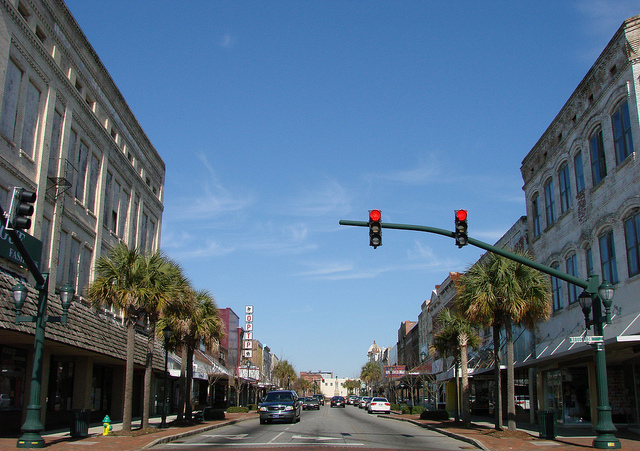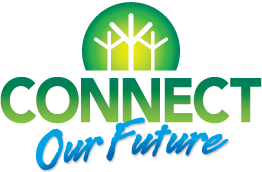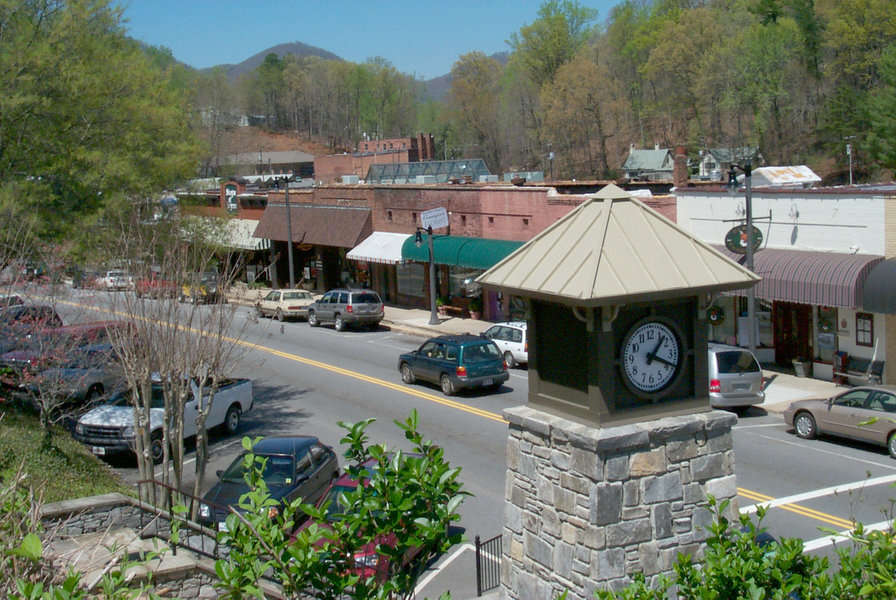What priorities does it address?
How does it work?
The Main Street Program is based on the Main Street Four-Point Approach®, designed to leverage local assets to foster economic development. The four points—1) Organization, 2) Promotion, 3) Design, and 4) Economic Restructuring—work together to build a sustainable and complete community revitalization effort. North Carolina created the Small Town Main Street program in 2003 to address the growing number of small, rural towns with populations under 7,500 that need downtown development assistance but are not likely, due to size or resource limitations, to pursue the regular Main Street program. Since then it has selected 50 communities to participate in the program.
The National Main Street Center, Inc, a part of the National Trust for Historic Preservation, oversees the program on the national level, providing information, technical assistance, hosting conferences and workshops, and conducting research and advocacy on behalf of the program. Each state has an office established to oversee the management of the Main Street Program and Small Town Main Street Program, which is a subsidiary of and accredited by the National Trust’s program. In North Carolina, the Office of Urban Development (OUD) in the Department of Commerce provides funding for these projects. In South Carolina, the Main Street Program is a part of the Municipal Association of South Carolina. Cities and communities will elect to become a designated Small Town Main Street and work with their State office to join the program and establish a local office.
Ready to get started?
Using the Tool
North and South Carolina have different programs for administering their Main Street Program. North Carolina offers the Main Street Program for cities less than 50,000 and the Small Town Main Street Program for towns less than 7,500. South Carolina only offers the Main Street Program. In North Carolina, the Office of Urban Development (OUD) in the Department of Commerce provides oversight for both programs. In South Carolina, the Main Street Program is a part of the Municipal Association of South Carolina. Interested communities must apply to their state agencies to apply for certification of the appropriate program, demonstrating the following: (the below example taken from Main Street South Carolina guidelines)- Affidavit of support of highest executive of local government (Mayor, City Council, City Manager)
- Demonstrate committed funding of a dedicated organization for at minimum three years, including sources of revenue from Municipal Government, Downtown/ District Business & Property Owners; Other business and industries; and other sources.
- Exhibit the following Performance Standards:
- Certification of 501(c)(3) designation or be designated as a department of local municipal government.
- Establish broad-based support for the commercial district revitalization process with strong support from both the public and private sectors.
- Develop vision and mission statements relevant to community conditions and to the local Main Street program’s organization stage.
- Develop comprehensive three year Main Street work plan
- Exhibit historic preservation ethic.
- Enlist active board of directors and committees
- Submit meeting calendars, mailing lists (or e-mail list)
- Provide and maintain adequate operating budget for each year.
- Establish local Main Street office within the designated Main Street district.
- Hire paid, professional program manager.
- Attend Main Street Program training for manager, board, committees, staff and volunteers.
- Attend National Main Street conference every other year.
- Report key quarterly statistics.
- Maintain Main Street membership.
- All Main Street Programs must adhere to the Main Street Approach utilizing the Four Points:
- Organization: Building partnerships to create a consistent revitalization program and develop effective management and leadership downtown. Diverse groups - merchants, bankers, public officials, the chamber of commerce and civic groups - must work together to improve downtown.
- Promotion: Reestablishing downtown as a compelling place for shoppers, investors and visitors. This means not only improving sales but also rekindling community excitement and involvement. Promotion ranges from street festivals to retail merchandising, from community education to marketing and public relations.
- Design: Enhancing the visual quality of the downtown. Attention is given to the downtown environment elements - not just buildings and storefronts but also public improvements, rear entries, signs, landscaping, window displays and graphic materials.
- Economic Restructuring: Strengthening the existing economic assets of the business district while diversifying its economic base. Activities include conducting market analysis to understand the changing market place, adapting vacant buildings that have outlived their original purposes for use as entertainment or cultural facilities and sharpening the competitiveness of Main Street's traditional merchants.
Partners
- Businesses / Business Associations
- Community Development Organizations
- Developers
- Economic Development Organizations
- Elected Officials
- Faith-Based Organizations
- Landscape Architects, Planners, and Urban Designers
Where has it worked?
Tryon - Tryon, NC
About the Program
Tryon, North Carolina is located in Polk County in the Blue Ridge Mountains. The town is situated approximately 40 miles south of Asheville, NC and 25 miles north of Spartanburg, SC. The Town of Tryon became a designated a North Carolina Small Town Main Street community in 2007 by the North Carolina Department of Commerce. As part of the designation the Town of Tryon receives technical services from the Small Town Main Street (STMS) staff. The program follows the guidelines set by the National Main Street Center which was founded by the National Trust for Historic Preservation. Since its establishment the Town of Tryon has received two Awards of Merit from the N.C. Commerce’s Small Town Main Street Award—in 2014 for Promotion and 2013 for Economic Restructuring.
Why it works
Tryon’s success has been a combination of firm local commitment and the right financial tools. Twenty years ago, the Tryon Downtown Development Association (TDDA) was stablished to address downtown concerns and fill empty retail spaces. TDDA created a strong relationship with the Town of Tryon to seek investors to commit to restoring Tryon to its rightful place as a wonderful destination. Even prior to becoming an official Small Town Main Street, TDDA began employing the approach of the National Main Street Center—promotion, design, economic restructuring, and organization—and raised funds to develop a master plan for its downtown, including redevelopment of the historic train depot and infrastructure improvements.
Firstly, Tryon won an NCDOT grant to bury overhead lines, install new street lights and begin sidewalk improvements. Secondly, a public-private partnership was formed that included private investments to build a new construction dentist office on Depot Plaza, renovate the historic Depot, and convert a former gas station across the street into a retail space on St. Luke’s Plaza. Tryon was able to leverage 15% of project funding through the Main Street Solutions Fund Grant, with 1.5% public financing and nearly 84% of private investment. In 2009, North Carolina established the Main Street Solutions Fund to provide economic development planning assistance and grant support to small businesses. The Solutions Fund has provided grants to 16 communities and leveraged an impressive amount of additional public and private dollars. Tryon has taken advantage of this funding to reinvigorate its one-sided Main Street commercial district.
Tryon’s economic and investment climate has been transformed as a direct consequence of the Main Street Solutions Funds, local funding sources, and the longstanding support of local advocates.
Orangeburg - Orangeburg, SC
 Image Source: JayeeDior12. Source License: CC BY-SA 3.0.
Image Source: JayeeDior12. Source License: CC BY-SA 3.0.
Contact
Jennifer Hoesing, Executive Director
About the Program
Orangeburg, South Carolina is home to the Downtown Orangeburg Revitalization Association (DORA), whose mission is to encourage the development, redevelopment, and improvement of downtown Orangeburg, and to promote downtown merchants, and businesses, in order to create a strong economic base for the community. Downtown Orangeburg Revitalization Association was founded in 1993 and has since that time received twenty-eight awards by Main Street South Carolina. DORA oversees development and revitalization in four distinct areas around downtown, including the town’s universities, Claflin University and South Carolina State, and hosts a number of community building events throughout the year.
Why it works
The Downtown Orangeburg Revitalization Association (DORA) has been a success due to its local commitment and support and adherence to the National Main Street Center’s guidelines. DORA has a full-time executive director and an extensive Board of Directors and Government Representatives, representing a broad range of interest groups. Since its foundation, it has focused on functional and aesthetic improvements specific to the needs of Orangeburg, including a façade grant program, parking management, and landscaping. It also has a full calendar of events ranging from seasonal parades and celebrations, to Taste of Orangeburg, and a Saturday morning farmer’s market.
Image Source: Marlan Dork. Source License: CC BY-NC 2.0. Adaptations: cropped.Main Street Programs are designed to give smaller to mid-sized communities the tools, leadership, and organizational framework to bring economic vitality back to their downtowns and main street corridors.
Why is this important to your community?
By far, the two most valued “assets” in the CONNECT region, as heard from the public, are the region’s town centers/main streets, and the region’s parks and natural features. The residents of this region believe that town centers and main streets are places where community happens, and that should be vital, healthy, and places that everyone wants to come. Furthermore, data have shown that throughout the region, businesses and properties that operate in town centers produce a much higher public return on investment than do more suburban businesses—and that’s good for everyone in the community. But many town centers and main streets throughout the region are facing loss of businesses, challenges with maintaining properties, and loss of vitality, which may be one reason that Supporting our Communities is such an important priority. The Main Street Program began in 1980 to help small communities throughout the United States accomplish economic resurgence through the reuse of commercial buildings located in historic downtowns. Since its foundation, the program has equipped more than 2,000 towns with the skills and organizational framework to revitalize their downtowns and celebrate their community heritage. Main Street programs have been shown to result in economic revitalization, fostering small business growth, finding new life for historic buildings, and spurring further infill development and resurgence adjacent to downtowns. Nationally, Main Street communities have had more than $55.7 billion of cumulative public and private investment in their downtowns.
Skip directly to
How Does It Work?
Resources
Using the Tool
Partners
Where Has It Worked?2000towns with Main Street programs since 198055.7in cumulative public and private investment in downtowns nationallyWhere is it appropriate to use?
What priorities does it address?
How does it work?
The Main Street Program is based on the Main Street Four-Point Approach®, designed to leverage local assets to foster economic development. The four points—1) Organization, 2) Promotion, 3) Design, and 4) Economic Restructuring—work together to build a sustainable and complete community revitalization effort. North Carolina created the Small Town Main Street program in 2003 to address the growing number of small, rural towns with populations under 7,500 that need downtown development assistance but are not likely, due to size or resource limitations, to pursue the regular Main Street program. Since then it has selected 50 communities to participate in the program.
The National Main Street Center, Inc, a part of the National Trust for Historic Preservation, oversees the program on the national level, providing information, technical assistance, hosting conferences and workshops, and conducting research and advocacy on behalf of the program. Each state has an office established to oversee the management of the Main Street Program and Small Town Main Street Program, which is a subsidiary of and accredited by the National Trust’s program. In North Carolina, the Office of Urban Development (OUD) in the Department of Commerce provides funding for these projects. In South Carolina, the Main Street Program is a part of the Municipal Association of South Carolina. Cities and communities will elect to become a designated Small Town Main Street and work with their State office to join the program and establish a local office.
Ready to get started?
Using the Tool
North and South Carolina have different programs for administering their Main Street Program. North Carolina offers the Main Street Program for cities less than 50,000 and the Small Town Main Street Program for towns less than 7,500. South Carolina only offers the Main Street Program. In North Carolina, the Office of Urban Development (OUD) in the Department of Commerce provides oversight for both programs. In South Carolina, the Main Street Program is a part of the Municipal Association of South Carolina. Interested communities must apply to their state agencies to apply for certification of the appropriate program, demonstrating the following: (the below example taken from Main Street South Carolina guidelines)- Affidavit of support of highest executive of local government (Mayor, City Council, City Manager)
- Demonstrate committed funding of a dedicated organization for at minimum three years, including sources of revenue from Municipal Government, Downtown/ District Business & Property Owners; Other business and industries; and other sources.
- Exhibit the following Performance Standards:
- Certification of 501(c)(3) designation or be designated as a department of local municipal government.
- Establish broad-based support for the commercial district revitalization process with strong support from both the public and private sectors.
- Develop vision and mission statements relevant to community conditions and to the local Main Street program’s organization stage.
- Develop comprehensive three year Main Street work plan
- Exhibit historic preservation ethic.
- Enlist active board of directors and committees
- Submit meeting calendars, mailing lists (or e-mail list)
- Provide and maintain adequate operating budget for each year.
- Establish local Main Street office within the designated Main Street district.
- Hire paid, professional program manager.
- Attend Main Street Program training for manager, board, committees, staff and volunteers.
- Attend National Main Street conference every other year.
- Report key quarterly statistics.
- Maintain Main Street membership.
- All Main Street Programs must adhere to the Main Street Approach utilizing the Four Points:
- Organization: Building partnerships to create a consistent revitalization program and develop effective management and leadership downtown. Diverse groups - merchants, bankers, public officials, the chamber of commerce and civic groups - must work together to improve downtown.
- Promotion: Reestablishing downtown as a compelling place for shoppers, investors and visitors. This means not only improving sales but also rekindling community excitement and involvement. Promotion ranges from street festivals to retail merchandising, from community education to marketing and public relations.
- Design: Enhancing the visual quality of the downtown. Attention is given to the downtown environment elements - not just buildings and storefronts but also public improvements, rear entries, signs, landscaping, window displays and graphic materials.
- Economic Restructuring: Strengthening the existing economic assets of the business district while diversifying its economic base. Activities include conducting market analysis to understand the changing market place, adapting vacant buildings that have outlived their original purposes for use as entertainment or cultural facilities and sharpening the competitiveness of Main Street's traditional merchants.
Partners
- Businesses / Business Associations
- Community Development Organizations
- Developers
- Economic Development Organizations
- Elected Officials
- Faith-Based Organizations
- Landscape Architects, Planners, and Urban Designers
Where has it worked?
Tryon - Tryon, NC
About the Program
Tryon, North Carolina is located in Polk County in the Blue Ridge Mountains. The town is situated approximately 40 miles south of Asheville, NC and 25 miles north of Spartanburg, SC. The Town of Tryon became a designated a North Carolina Small Town Main Street community in 2007 by the North Carolina Department of Commerce. As part of the designation the Town of Tryon receives technical services from the Small Town Main Street (STMS) staff. The program follows the guidelines set by the National Main Street Center which was founded by the National Trust for Historic Preservation. Since its establishment the Town of Tryon has received two Awards of Merit from the N.C. Commerce’s Small Town Main Street Award—in 2014 for Promotion and 2013 for Economic Restructuring.
Why it works
Tryon’s success has been a combination of firm local commitment and the right financial tools. Twenty years ago, the Tryon Downtown Development Association (TDDA) was stablished to address downtown concerns and fill empty retail spaces. TDDA created a strong relationship with the Town of Tryon to seek investors to commit to restoring Tryon to its rightful place as a wonderful destination. Even prior to becoming an official Small Town Main Street, TDDA began employing the approach of the National Main Street Center—promotion, design, economic restructuring, and organization—and raised funds to develop a master plan for its downtown, including redevelopment of the historic train depot and infrastructure improvements.
Firstly, Tryon won an NCDOT grant to bury overhead lines, install new street lights and begin sidewalk improvements. Secondly, a public-private partnership was formed that included private investments to build a new construction dentist office on Depot Plaza, renovate the historic Depot, and convert a former gas station across the street into a retail space on St. Luke’s Plaza. Tryon was able to leverage 15% of project funding through the Main Street Solutions Fund Grant, with 1.5% public financing and nearly 84% of private investment. In 2009, North Carolina established the Main Street Solutions Fund to provide economic development planning assistance and grant support to small businesses. The Solutions Fund has provided grants to 16 communities and leveraged an impressive amount of additional public and private dollars. Tryon has taken advantage of this funding to reinvigorate its one-sided Main Street commercial district.
Tryon’s economic and investment climate has been transformed as a direct consequence of the Main Street Solutions Funds, local funding sources, and the longstanding support of local advocates.
Orangeburg - Orangeburg, SC
 Image Source: JayeeDior12. Source License: CC BY-SA 3.0.
Image Source: JayeeDior12. Source License: CC BY-SA 3.0.
Contact
Jennifer Hoesing, Executive Director
About the Program
Orangeburg, South Carolina is home to the Downtown Orangeburg Revitalization Association (DORA), whose mission is to encourage the development, redevelopment, and improvement of downtown Orangeburg, and to promote downtown merchants, and businesses, in order to create a strong economic base for the community. Downtown Orangeburg Revitalization Association was founded in 1993 and has since that time received twenty-eight awards by Main Street South Carolina. DORA oversees development and revitalization in four distinct areas around downtown, including the town’s universities, Claflin University and South Carolina State, and hosts a number of community building events throughout the year.
Why it works
The Downtown Orangeburg Revitalization Association (DORA) has been a success due to its local commitment and support and adherence to the National Main Street Center’s guidelines. DORA has a full-time executive director and an extensive Board of Directors and Government Representatives, representing a broad range of interest groups. Since its foundation, it has focused on functional and aesthetic improvements specific to the needs of Orangeburg, including a façade grant program, parking management, and landscaping. It also has a full calendar of events ranging from seasonal parades and celebrations, to Taste of Orangeburg, and a Saturday morning farmer’s market.
- Community Development Organizations
- Community Development Organizations



